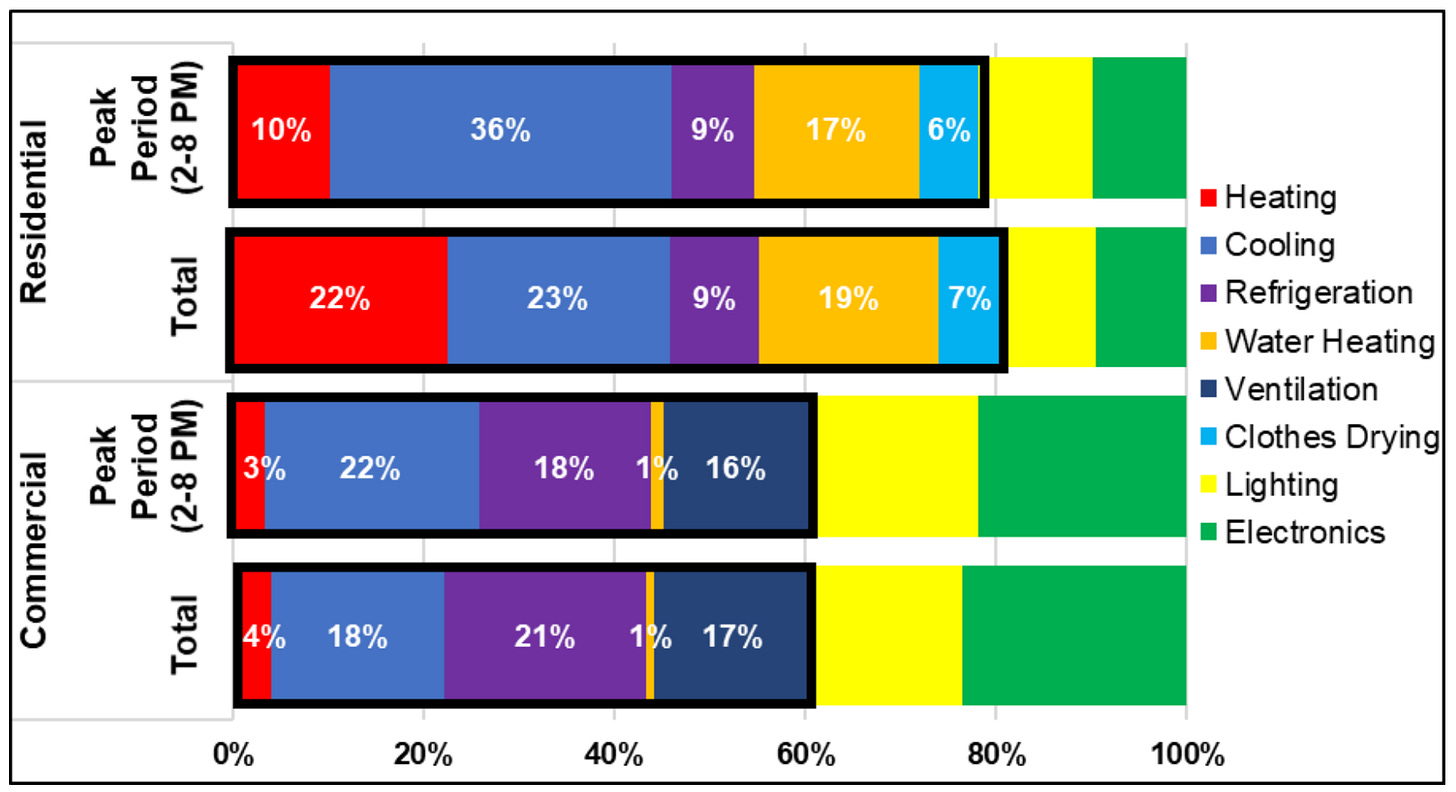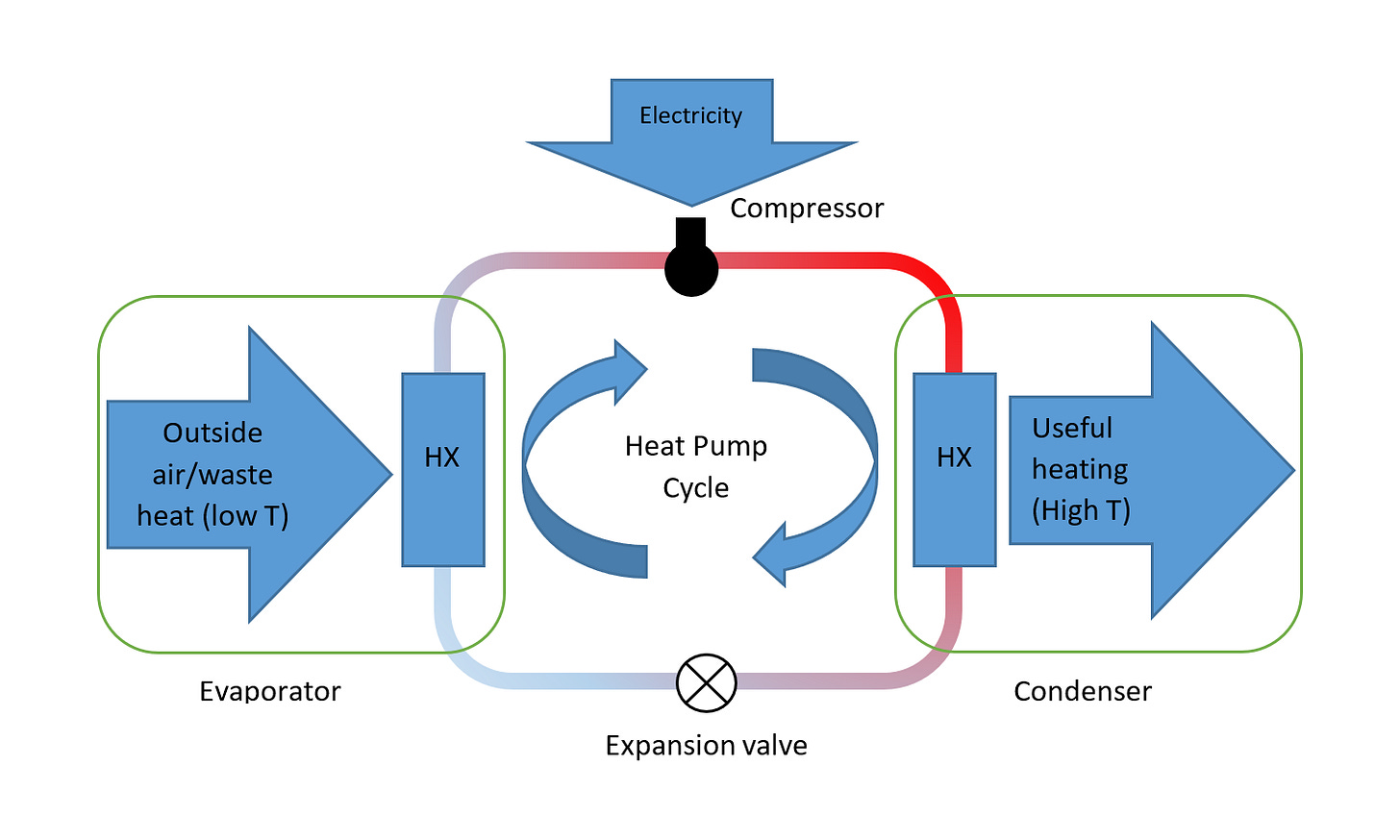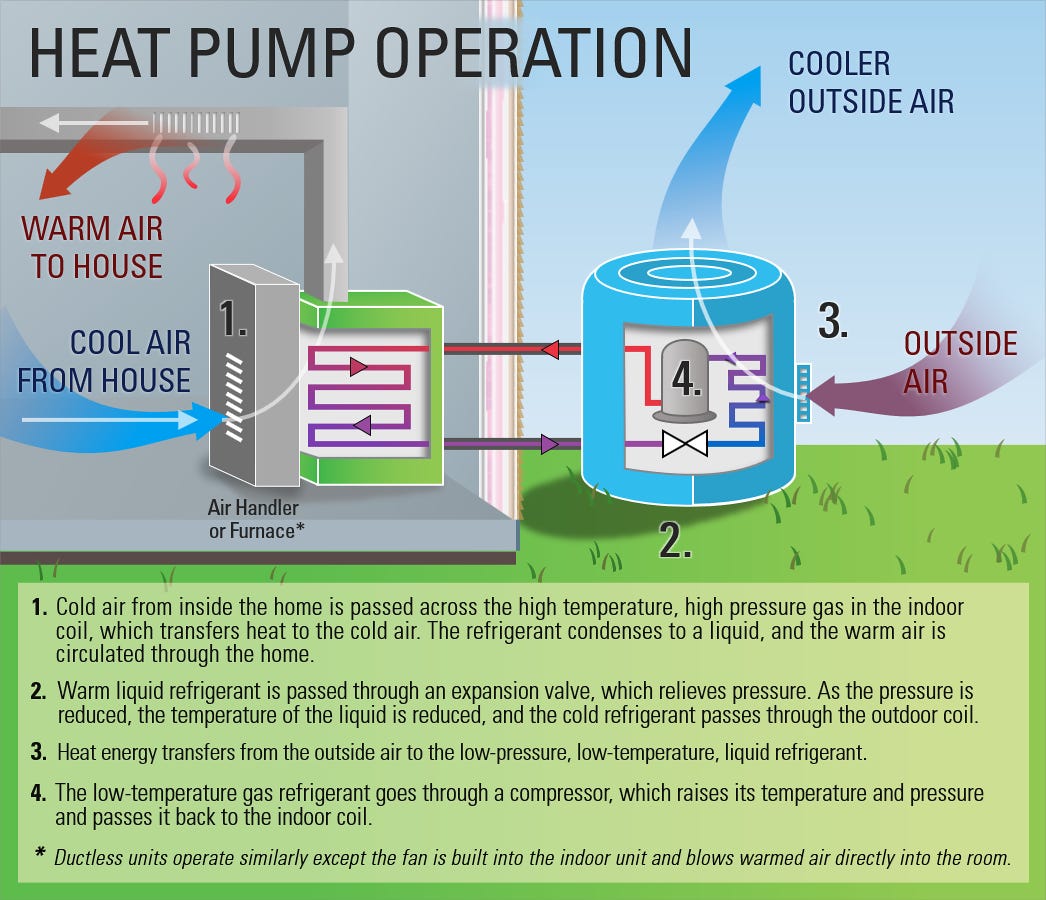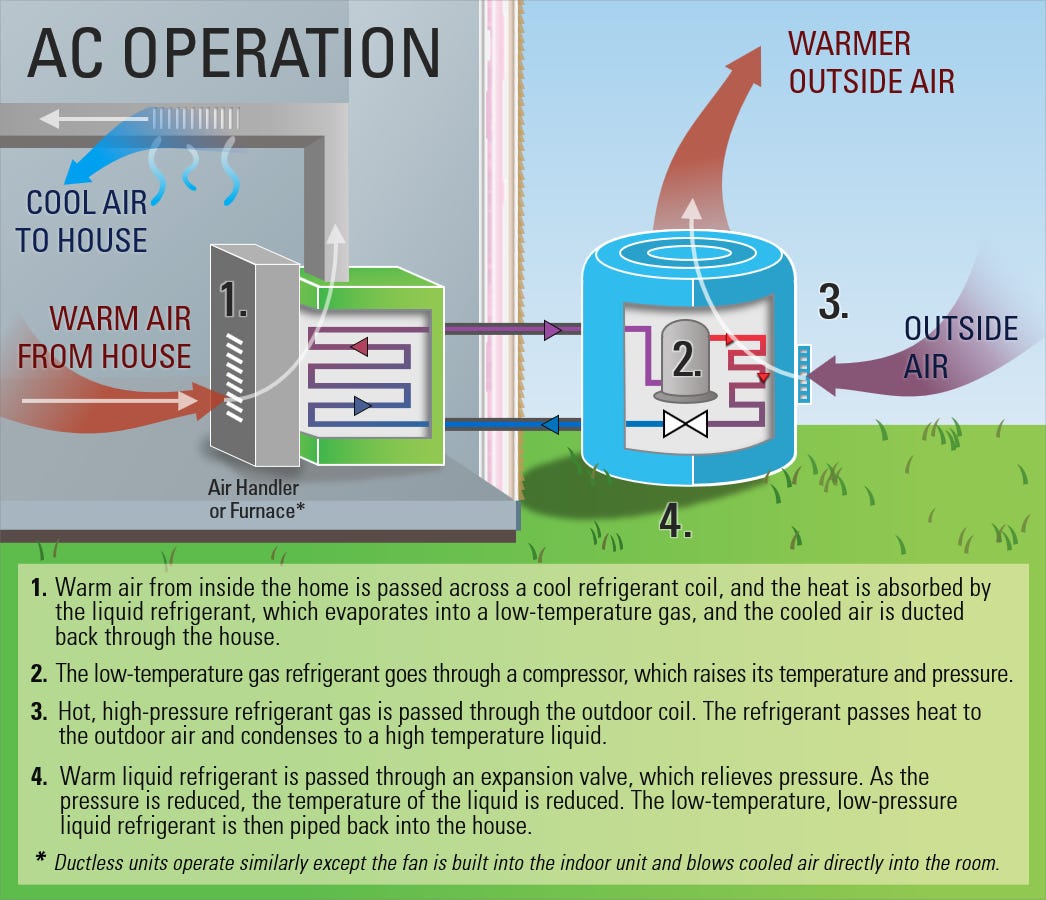Here’s the deal. Humans have a range of climate conditions - temperature and humidity levels - in which we feel comfy. Most of us know the relief of entering am air conditioned room after being out in the sweltering summer heat. Or the joy of thawing in a warm lobby in the middle of winter. We heat and cool our spaces to be more comfortable.
However, an enormous 40% of residential buildings' energy consumption comes from simply heating our rooms and the water we use. Much of this energy comes from fossil fuel sources such as natural gas today. We have a path towards low carbon heating and cooling and more efficient use of our resources. Heat pumps can get us there.

Get pumped: we have a solution
Heat pumps are the most energy efficiency solution to heat spaces and water. Heat pumps can reduce operational emissions by 60%. We can electrify heating and cooling, and even use renewable energy. We’ll also increase efficiency in the process. We have all the tech we need to make this happen. We just need to implement it!
Imagine taking a nice hot shower. The water could be warmed by a natural gas boiler, where 60% of the energy content of the fossil fuel is wasted, or by efficient, clean electricity. By electrifying our energy demand, we can save up to 50% of our energy.
How it works
Heat pumps are 4X as efficient as traditional ACs and heaters. This might sound too good to be true, but how it works is simple. A heat pump is an energy-efficient heating system that transfers heat from a low-temperature source to a high-temperature sink. Typically, the heat source is the outdoor air, ground, or water, while the heat sink is the indoor space that needs to be heated.
The basics
The heat pump cycle involves four main steps: compression, condensation, expansion, and evaporation.
The refrigerant is compressed into a high-pressure vapor, which requires electricity input.
The vapor is then pumped through a condenser where it releases the latent heat of condensation to the outside environment.
Next, the liquid refrigerant is expanded in the expansion valve before it flows through the evaporator, where it absorbs heat from the outside environment.
This heat is then transferred to the indoor space, providing warmth.

Compared to traditional heating systems, such as furnaces and electric resistance heaters, heat pumps are more efficient because they move heat instead of generating it from scratch.
And it’s reversible?!


HVAC is gaining heat
Heat pump adoption is rapidly growing, especially in the EU where an even greater fraction of residential energy consumption - 70% of energy use is from heating and cooling spaces.
Back in 2016, I was doing a research internship at Ryerson University, renamed Toronto Metro University due to Ryerson’s involvement with residential schools, as part of a high school engineering program. We were touring the Clean Energy Zone (CEZ) when I met Actual Energy Solutions. I met with Warren and Steve, the co-founders of the start-up. Their vision was to help commercial buildings retrofit - essentially renovate and upgrade - parts of their heating, vents, air condition, and insulation to be more energy efficient. From the basement of a university building, we would cold call potential customers - from grocery stores to larger commercial buildings - to help them save money and energy.
HVAC was not nearly as sexy as it is now. Honestly, HVAC only really glowed up in the last year. Why? Policy changes and increased understanding of its importance as a policy lever.
A meme from a group chat the other day:
Deep energy retrofits are among the most effective levers for reducing energy consumption and emissions today. It means using what we already have, better. By not insulating our homes well, we are leaking not just heat, but money and emissions.
Let’s rise to the challenge:
So we’re constantly hearing: we have the solutions and we just need to implement them. What does it look like to implement this one? Here are ways you can help realize the promise of heat pumps and electrifying heating/cooling:
work on electrification and heat pumps
there is a shortage of heat pump installers and contractors
get a heat pump for your home! or encourage decision makers in your life to get one (in my case, that would be my parents)
governments will pay you to save money and energy. yeah, that’s right. for others in Toronto, here are environmental rebates for home retrofits offered today.
Recommended readings:
Electrify: an optimist's playbook for our clean energy future - Saul Griffith
The Grid: the fraying wires between Americans and our energy future - Gretchen Bakke
Articles
DOE. Heating, Ventilation, and Air Conditioning (HVAC); Water Heating; Appliances; and Refrigeration. https://www1.eere.energy.gov/buildings/pdfs/75473.pdf
IEA (2022), Heat Pumps, IEA, Paris https://www.iea.org/reports/heat-pumps, License: CC BY 4.0
https://cove.tools/blog/deep-dive-heat-pump-systems
https://rmi.org/now-is-the-time-to-go-all-in-on-heat-pumps/
CTVC Feature on heat pumps and Woltair https://www.ctvc.co/heat-pumps-are-hot/





